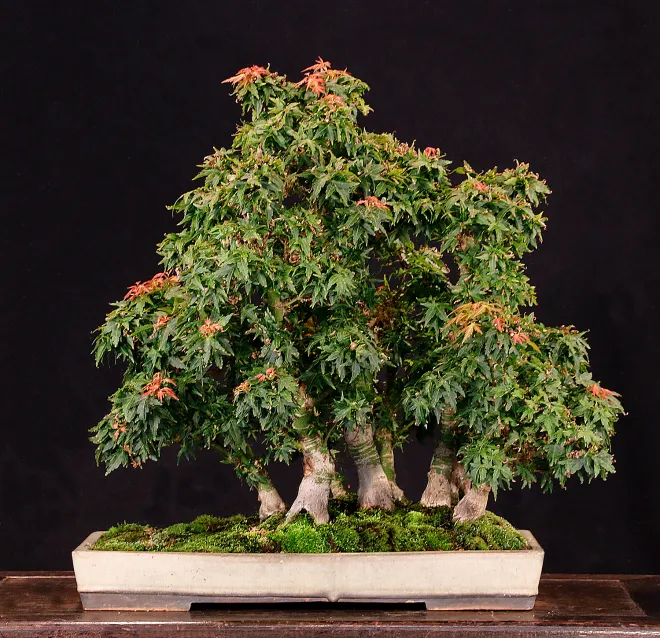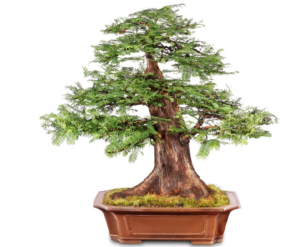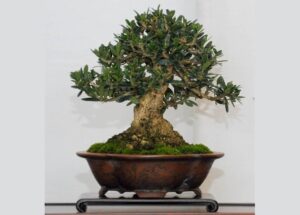Koto Hime Japanese Maple

The leaves of Koto Hime Japanese maple are closely spaced which means that there is an abundance of adventitious vegetative buds, even on old wood. This is an excellent characteristic for drastic pruning thick trunks and branches for developing or remodeling bonsai.
Most maples have an opposite leaf arrangement, but this cultivar often sports and produces a whorled arrangement.
Koto Hime Japanese maples are extremely easy to root as semi-softwood cuttings. Although cuttings can be taken anytime with good results, the ideal time for rooting is in late spring. Koto Hime Japanese maple can also be air layered with ease. Even large branches over one inch in diameter will root in approximately two months when taken in spring.
Since the natural characteristic of Koto Hime Japanese maple is upright the standing bonsai styles, (formal and informal upright and slanting) are the best forms to use. Any horizontal branching must be trained by wiring or pruning. Even if the branches are wired down, all future growth will remain upright.
Small size bonsai can be developed quicker than larger specimens, especially when air layering sections from large plants. Small specimens need small, neat foliage to be in proportion and this cultivar is perfect for that.
Since the leaves are so tightly congested, it is necessary to thin out the buds each spring when they swell or as they are opening. This technique will eliminate many of the freely produced buds along thick old trunks and branches and give strength to the desired branches.
Should a branch get damaged, die or pruned, a new bud can easily and quickly be trained as a replacement. Allow the small replacement bud to extend without pinching or training to encourage the development.



